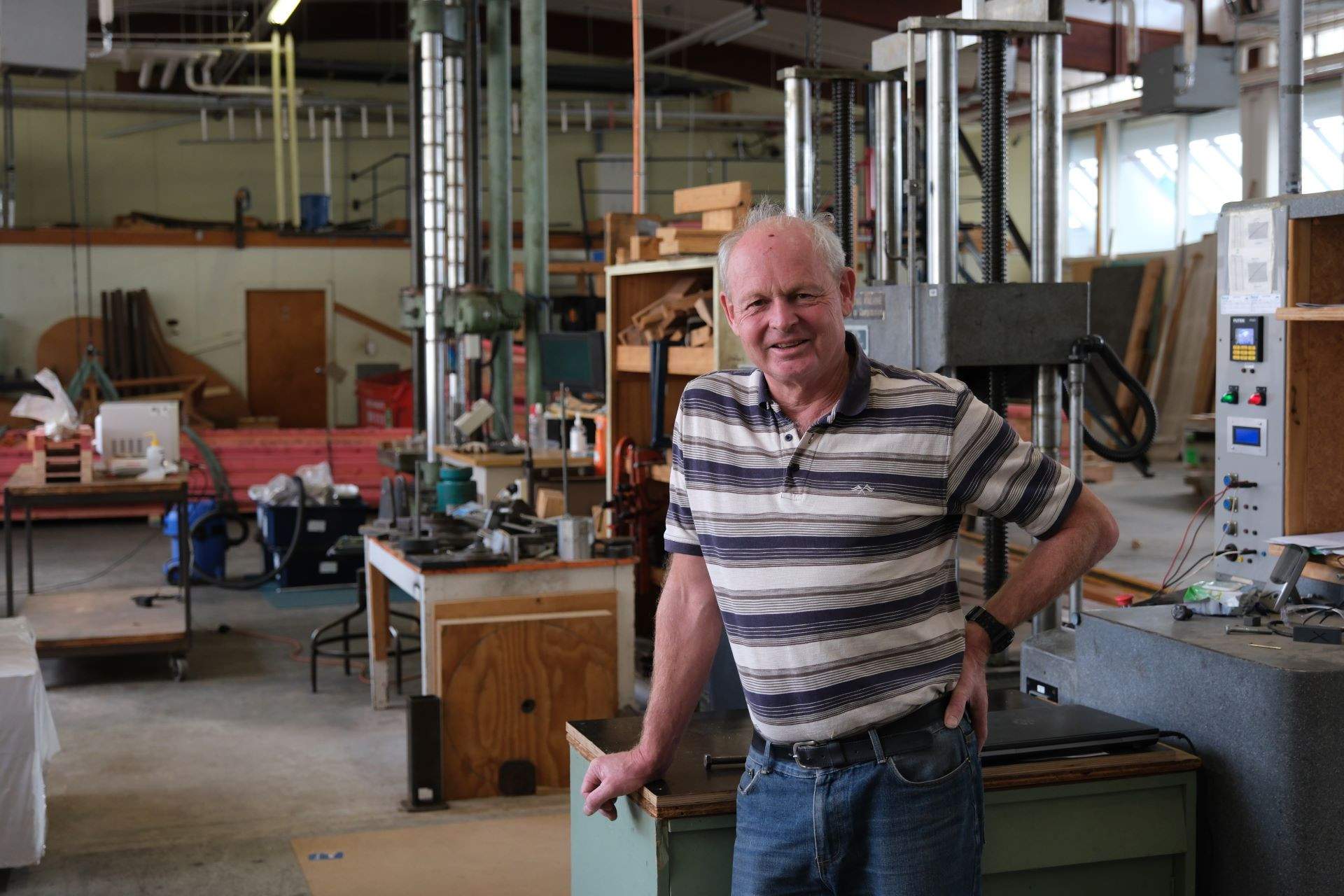Categories
Recent Articles
'Practical and pragmatic': Doug Gaunt retires after 29-year stint at Scion

With a career spanning 45 years, 34 at Scion, Doug Gaunt’s impact is seen on everything from building systems to wood grading and Scion’s own Te Whare Nui o Tuteata building. He says his story shows it doesn’t matter where you start in your career, you can work your way up.
Doug retired from the Rotorua-based Crown Research Institute in April, walking out of the very building he helped test components of. He first walked through the doors of what was then the Forest Research Institute in 1979, after joining the technician trainee scheme.
Under the scheme, trainees would spend two years working in different areas for a few months at a time to find an area they liked.
But after the second rotation, Doug had already found his passion – timber engineering. He spent five years at the FRI at that time, completing an NZCE (Civil) in 1984 before spending six months crayfishing in Stewart Island for a change of pace.
Doug then completed a Bachelor of Engineering at the University of Canterbury, stints with a local consultant and overseas in the UK, and returned to Rotorua in 1995.
He wanted to do something different with his career but found himself applying for a job with the FRI advertised in the NZ Engineering Magazine. He’s been here ever since.
Doug says his pathway shows you can work your way up.
“I started as a technician so you can start at the bottom and it’s not career limiting.”
He became a science leader about 12 years ago and says being an engineer, not a scientist was an advantage.
“It meant I had to talk to all the scientists. The right person needs to represent the science and I think you build quite a powerful team doing that.”
But why did he stick around so long?
“I have enjoyed it. I love the lab work and my skill. I love dealing with commercial clients and I like making a difference. There are a lot of building systems out there that have my fingerprints all over them.
“Engineers like to solve things and that’s what I do. I've enjoyed solving stuff making things better for other people. That’s what I’ve enjoyed.”
Leaving a legacy
Even in retirement, Doug’s legacy can be seen in what he achieved. For him, a career highlight was the introduction of a grading system for wood and quality assurance in 2004 which he says gave people more confidence in using wood.
“We also gave the industry tools to do this themselves. Before that people would just look at the timber. We gave them a tool and I look back and think actually we did change the New Zealand system.
“That’s what I’m most proud of.”
He also learned the importance of commercial partners. A lot of the work the wood testing lab does now is for commercial partners, rather than the timber engineering research of the past.
He names Falcon Engineering’s Greg Trowbridge who helped take the A grader tool to the world.
“It showed you can have a good idea but you need a strong commercialisation partner. Greg did all the hard yards.”
He’s also proud to have worked with a range of sawmills, manufacturers and processors across the country.
Doug’s advice for workers coming through is to "keep your skills” and share the workload.
“There’s temptation to move up through the system and into management. But you can do both. Always keep your skills,” he says.
“Also, don’t do it all yourself. It’s always better to empower people and support them ... It’s good for them and it’s good for me.”
Doug says as a science leader he would trust his team to get the job done, even when he wasn’t there, and he’d always have their back.
“It’s also a sign of respect to the clients to put the right people in front of them. I could talk about wood durability, but I know somebody who could talk about it better.”
Looking back
In his more than 30 combined years at Scion, Doug says he has seen a lot of change. Of course there was the change from Forest Research Institute to Crown Research Institute and Scion but also changes in the team from five scientists, five technicians, to a team of two.
There were also changes in technology, just as advancements in computers making them accessible and typing pools and data entry teams no longer necessary.
But other technologies stay steady. A test machine from 1955 worked well for 40 years and half of it is still used, while the other half has been computerised. Another machine in the lab dates back to war times.
While what’s next remains to be seen, Doug says it’s not the end.
“It’s probably the beginning. I’ve still got some good years left so there will be something coming along. I’m going to be in the industry still.”


